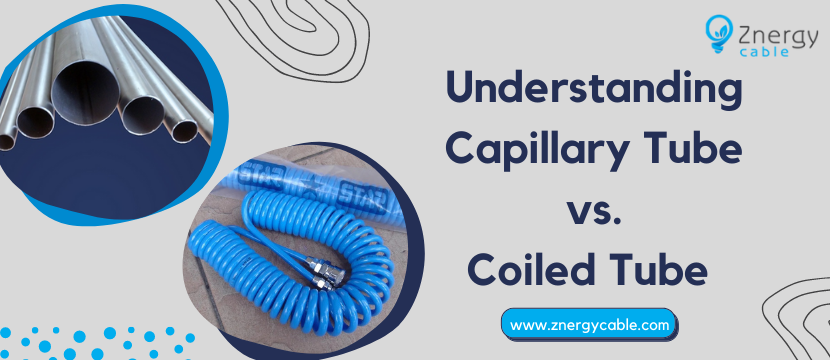Understanding Capillary Tube vs Coiled Tube
Capillary tubing, also known as Capillary Tube, are very thin tubes constructed of a rigid material such as plastic or glass, through which a liquid flows up against gravity into the tubes in a process known as capillary action (capillarity).
The movement of a liquid via a small cross-sectional capillary passage tube, such as the openings in porous materials, is known as capillarity. The capillary action of a fluid can happen in both vertical and horizontal directions. Capillarity, also known as capillary action, is a phenomenon in which a fluid travels upward despite gravity.
Capillarity arises in capillary tubing due to inter molecular tensions between the liquid and the tube's surrounding solid surfaces. It's created by cohesion and adhesion pressures, which cause the liquid to move against gravity.
- Liquids are drawn up between the hairs of a paintbrush.
- Tubes that are very thin
- Paper, for example, is a porous material.
- liquefied carbon fibre, for example, is a non-porous material.
- Cells
Thin layer chromatography, in which a solvent flows vertically up a plate via capillary action, is one of the many uses of capillary action. Capillary motion causes a filler metal to be pulled into the gap between work parts during brazing.
When and why would a capillary tube be used?
One of the most frequent throttling mechanisms in refrigeration and air conditioning systems is the capillary tube. Copper tubes with a very small internal diameter make up the capillary tube. It has a very lengthy length and is coiled into multiple turns to take up less space. The internal diameter of capillary tubes used in refrigeration and air conditioning systems ranges from 0.5 to 2.28 mm (0.020–0.09 inches). In refrigerators, deep freezers, water coolers, and air conditioners, a capillary tube is utilised as a throttling device.
Capillary tubes have the drawbacks of not being adaptable to changing load conditions, being prone to foreign matter clogging, and requiring the bulk of the refrigerant charge to be kept within tight limitations. Because of this last property, the capillary tube can only be utilised in hermetically sealed systems where the refrigerant is less likely to seep out. The capillary tube is intended for a specific set of operating circumstances, and any deviation from those requirements, whether in terms of applied heat load or condensing temperature, results in a reduction in operational efficiency.
What is meaning of Coiled Tube?
When any well repair or work over activities are to be undertaken, coiled tubing is a long metal pipe that is surrounded or rolled over a huge reel and carried to the well site. The coiled tube has no joints, implying that it is a single long metal pipe that may be inserted into a borehole to a depth of up to 15000 feet.
The diameter parameters of coiled tubing vary depending on the well bore diameter. The coiled tube diameter ranges from 25 to 85 mm, or 1 to 3.5 inches.
Coiled tubing improves the performance of the well and reservoir. Coiled tubing is used in a variety of procedures on the job site, including:
- Milling\s Drilling
- Fracture of the rock
- Sidetracking
- Tubing for production
- Drilling with a low bottom hole pressure
- Cleanup of the well bore
- Kick-off with Nitrogen
- Controlling sand
- Cementing
- Tube logging and perforating for mechanical isolation
The coiled tube is uncurled from the reel and straightened before being put into the well bore. These coiled pipes can be used in both onshore and offshore oil wells.
By analysing various elements in the tube, the flow behaviour of straight, helically, and spirally coiled capillary tubes is examined under various operational and geometric situations. The helical effect grew as the coiling diameter decreased, while the effect of input circumstances was minimal.
Australian Cable Manufacturers build custom tubing for a variety of needs in a variety of sectors, and it's provided when they need it most.
Superior tube products necessitate cutting-edge technology and expertise Znergy Cables pays attention to the finer points, creating tubular goods with tight dimensions and straightness tolerances and a variety of surface finishes.




Comments
Post a Comment